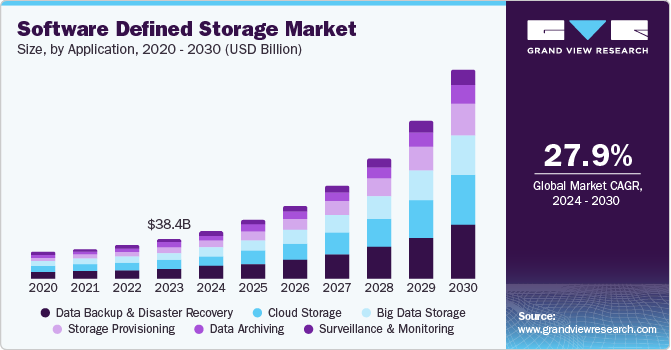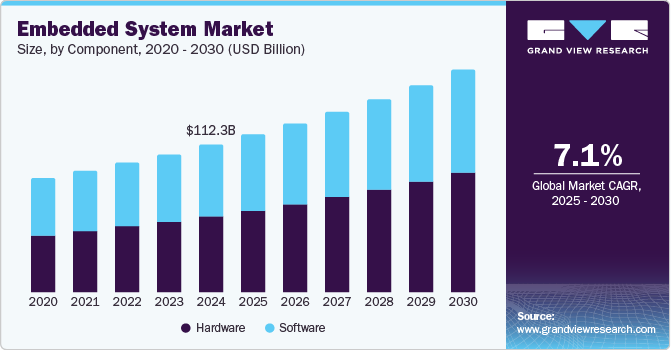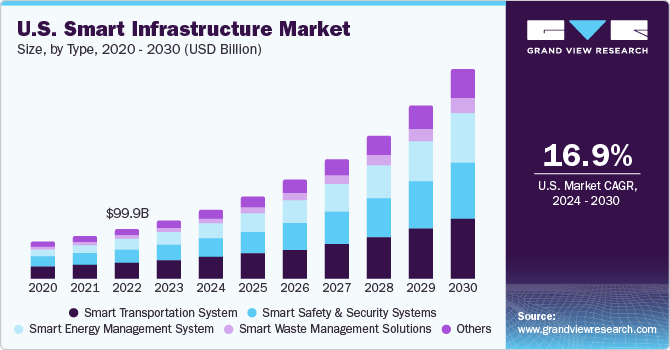AI-based Electrical Switchgear Market Size, Share & Trends Analysis growing at a CAGR of 9.5% from 2025 to 2033

The global AI-based electrical switchgear market size was estimated at USD 26,157.3 million in 2024 and is projected to reach USD 59,616.9 million by 2033, growing at a CAGR of 9.5% from 2025 to 2033. AI-based electrical switchgear market is accelerated by the growing need for advanced technologies such as AI, IoT, and other technologies that enhance energy efficiency and sustainability with the growing demand for power and smart grids to distribute the power in systems with intelligence.
Key Market Trends & Insights
- North America dominated the global AI-based electrical switchgear market with the largest revenue share of 41.2% in 2024.
- The AI-based electrical switchgear market in the U.S. led the North America market and held the largest revenue share in 2024.
- By component, the hardware segment led the market, holding the largest revenue share of 54.7% in 2024.
- By type, the low voltage segment held the dominant position in the market and accounted for the leading revenue share of 42.5% in 2024.
- By end user, the residential segment is expected to grow at the fastest CAGR of 11.9% from 2025 to 2033.
Market Size & Forecast
- 2024 Market Size: USD 26,157.3 Million
- 2033 Projected Market Size: USD 59,616.9 Million
- CAGR (2025-2033): 9.5%
- North America: Largest market in 2024
Request a free sample copy or view report summary: https://www.grandviewresearch.com/industry-analysis/ai-based-electrical-switchgear-market-report/request/rs1
The AI-based electrical switchgear market is mainly driven due to the growth of smart grids and the increase in integration of renewable energy sources. Industrial players are increasingly demanding technologies that boost the energy stability and improve operational performance, which AI-enabled switchgear achieves through real-time monitoring and fault detection. In addition, government policies and incentives focused at promoting energy efficiency and digital transformation in electrical switchgear are rising this market. The growing demand to efficiently manage complex, distributed energy systems with minimal downtime is also attracting organizations to adopt AI-based predictive maintenance and electrical switchgears.
Furthermore, the progress in AI and machine learning, which has majorly enhanced the accuracy and usefulness of predictive analytics and condition monitoring are also the drivers for this market. AI-powered switchgear systems can process large volumes of sensor data to predict any failures, accurate schedules for maintenance, and extending the equipment’s lifecycle of usage, leading to significant cost reductions and increased safety. Additionally, the increasing installation of IoT and Industry 4.0 technologies is enhancing the seamless integration of switchgear into larger smart infrastructure ecosystems. This integration enables remote diagnostics and real-time performance optimization, which improves operational uptime and also provides strong and adaptable power systems.
Lastly, the growing need for sustainability and energy efficiency in the power systems is forcing the manufacturers and utilities to adopt smart, environmentally friendly switchgear solutions. AI-powered power systems contribute by reducing energy losses, minimizing resource consumption, and providing the integration of renewable energy and improved grid stability. The rising need for dependable, safe, and cost-efficient power distribution driven by continuous urbanization, industrial growth, and the demand for continuous electricity supply further, drivers this market and trend across both developed and developing regions.
Component Insights
The hardware segment led the market in 2024, accounting for 54.7% of global revenue due to the integration of latest sensors and embedded devices that facilitate real-time data acquisition and fault detection, thereby improving system reliability and safety. The need for strong, long-lasting hardware that can function effectively in a variety of conditions is also driving the adoption in industrial and utility applications. Rising investments in smart grid infrastructure further increase the demand for hardware that can seamlessly work alongside AI software to enable predictive maintenance and automated controls. In addition, the increasing use of renewable energy calls for hardware capable of dynamically handling fluctuating power inputs while ensuring grid stability. Also, the focus on sustainability and energy efficiency is pushing the development of compact, energy-efficient hardware designs that can fully support AI-driven features.
The software segment is expected to grow at the highest CAGR during the forecast period driven by its capability to enhance switching performance using AI-driven control algorithms that dynamically enhance switching times, thereby cutting losses and improving efficiency. Advanced AI software also supports real-time data analytics, enabling early detection of faults and reducing downtime. For instance, in April 2023, ABB introduced CogniEN, a cloud-based platform for monitoring electrical assets, focused for low- and medium-voltage equipment used in sectors such as renewable energy, EV charging, and data centers. Built on AWS and designed to be vendor-neutral, this platform uses predictive analytics to enhance asset performance and speed up maintenance processes. Integration with digital twins and cloud platforms allows for remote monitoring and automated decision-making, enhancing grid reliability and operational agility.






